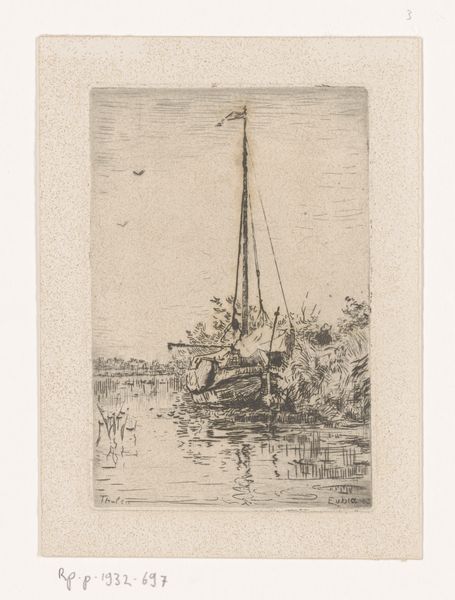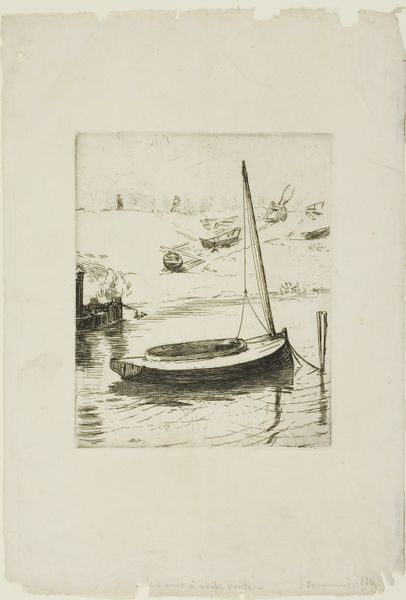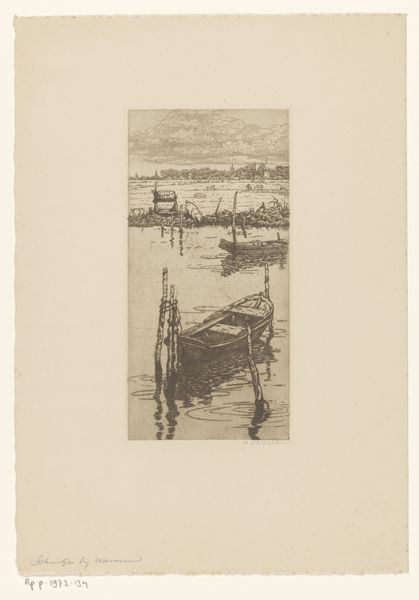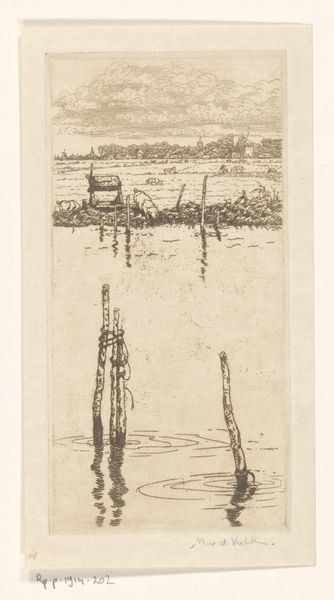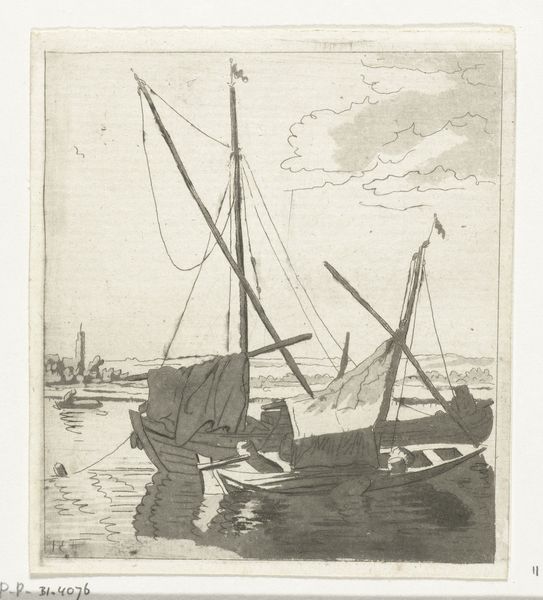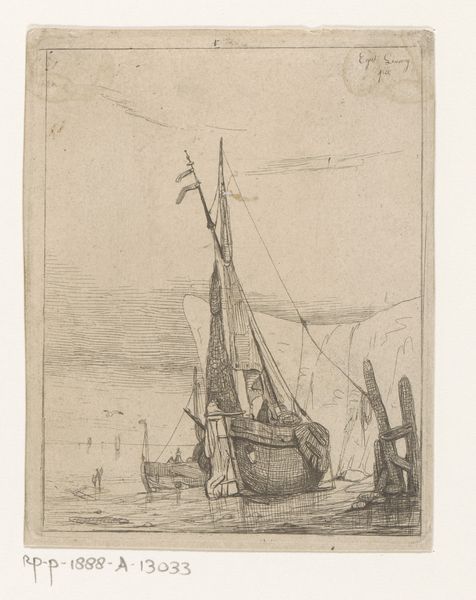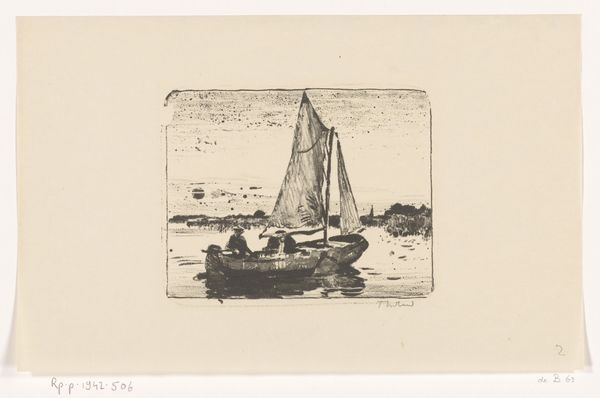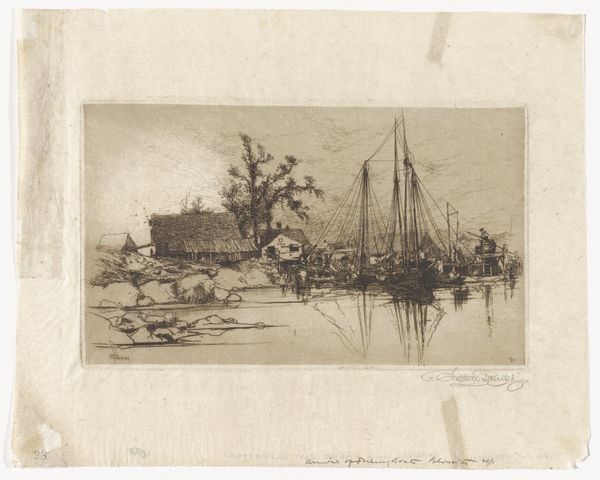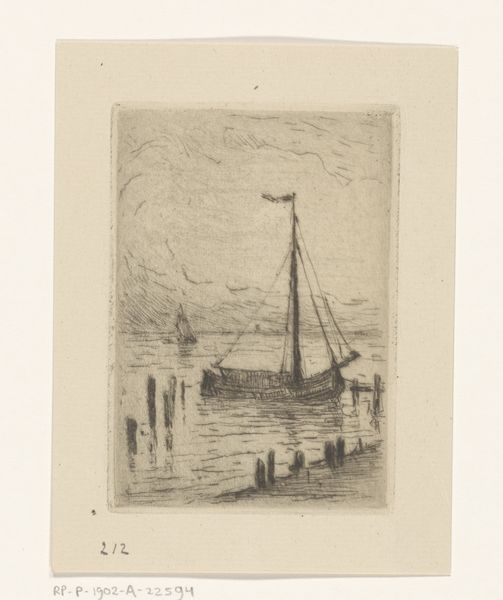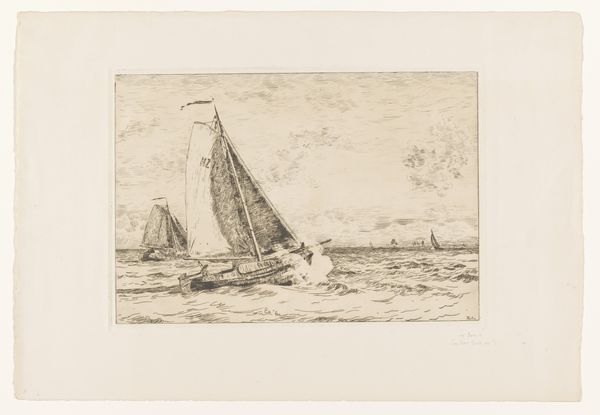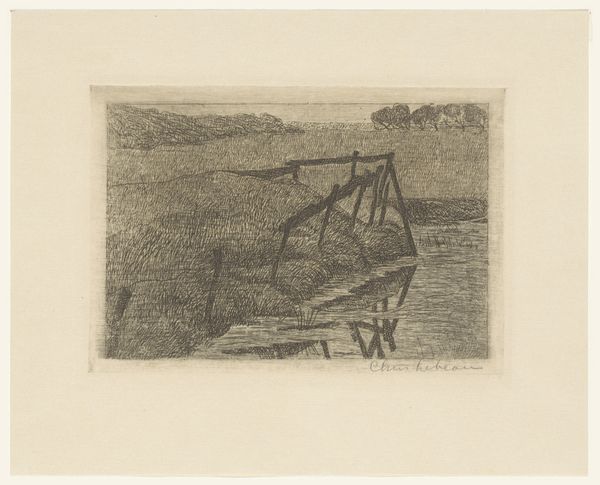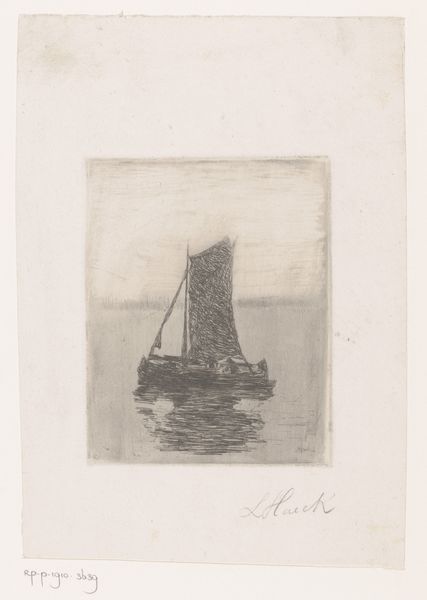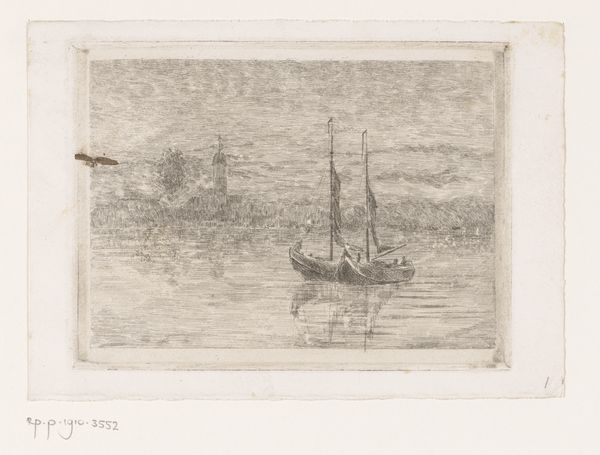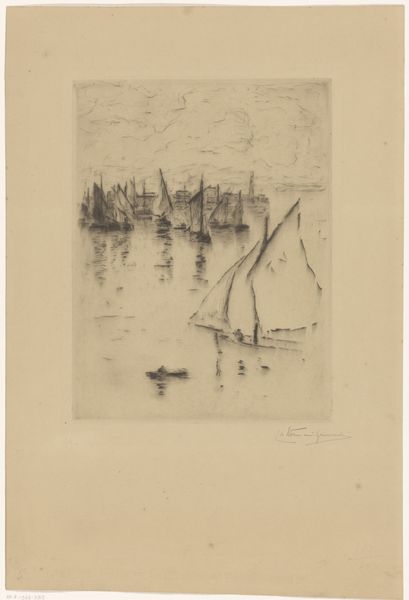
Dimensions: height 121 mm, width 81 mm
Copyright: Rijks Museum: Open Domain
Editor: We're looking at Willem Bastiaan Tholen's etching "Eubia" from 1903, housed in the Rijksmuseum. The image depicts a sailboat close to shore. I’m immediately struck by how delicate the lines are; it almost feels like a faded memory. What do you notice in terms of the formal elements? Curator: Indeed, the artist masterfully uses etching to create a nuanced interplay of light and shadow. Consider the composition: the vertical thrust of the mast bisects the image, counterbalanced by the horizontal line of the distant shore. Note also how the reflections in the water, though delicate, echo and almost abstract the forms above. Does this add a certain… planar tension, in your view? Editor: Yes, definitely. It’s almost like two realities superimposed – the tangible boat and its ethereal reflection. I also find it interesting how the density of the lines varies. Curator: Precisely. See how the density increases towards the lower right, near the vegetation, drawing our eye there, before letting it wander back to the subtly rendered, open space of the water? This rhythm established by tonal variations leads our gaze. The semiotic implication could indicate transition and spatial orientation. Editor: That's a very interesting point! It’s almost as if the formal arrangement of the lines dictates where the eye travels and the rhythm that unfolds across the surface. It's a surprisingly complex piece. Curator: Precisely, the success here is using modest means – line and tone – to create compositional complexities and direct the viewer's visual path through the landscape. Editor: I see what you mean. I went in thinking the delicacy was the main feature, but the compositional choices and contrasts are what make it compelling. Thank you.
Comments
No comments
Be the first to comment and join the conversation on the ultimate creative platform.
